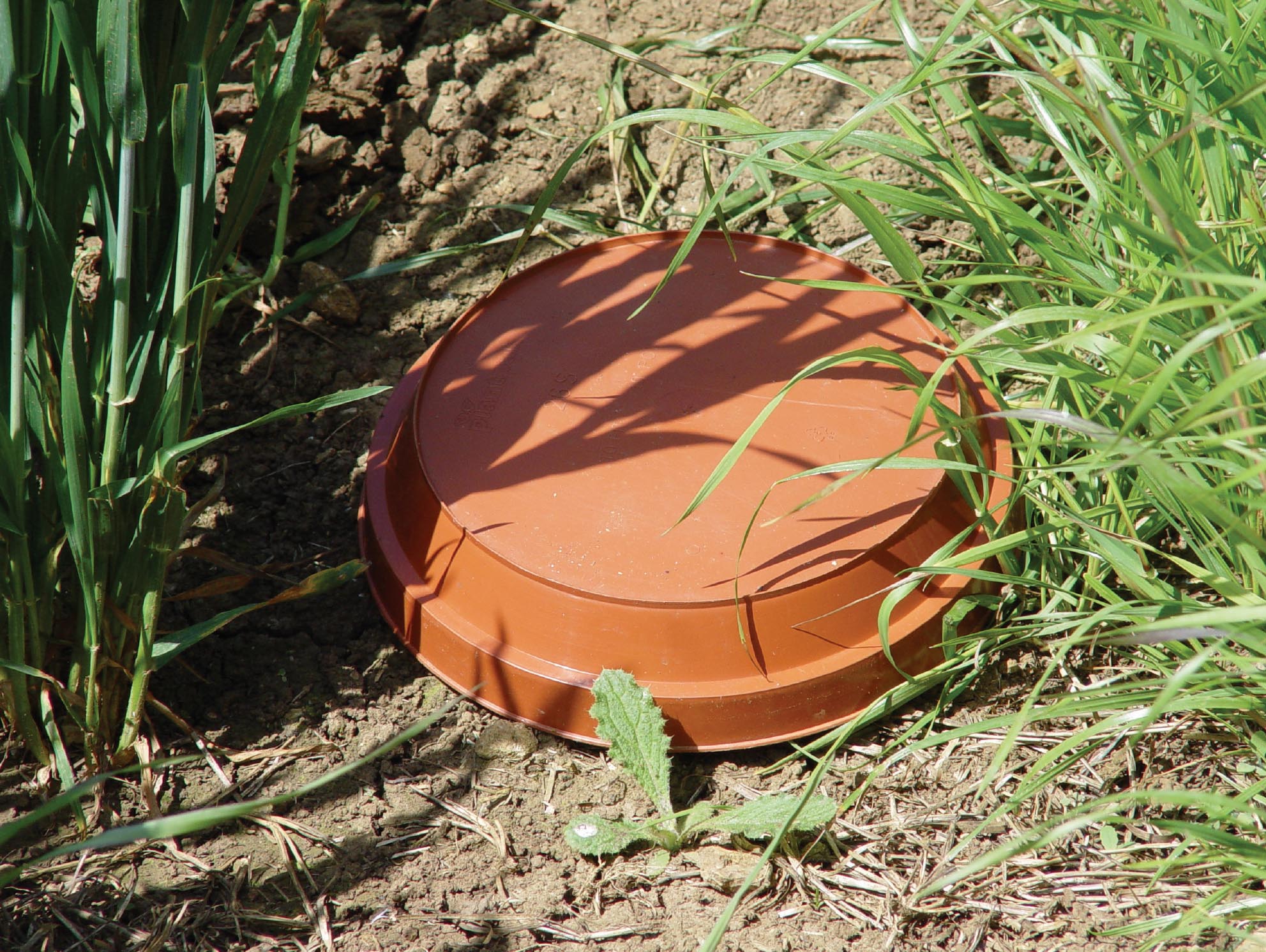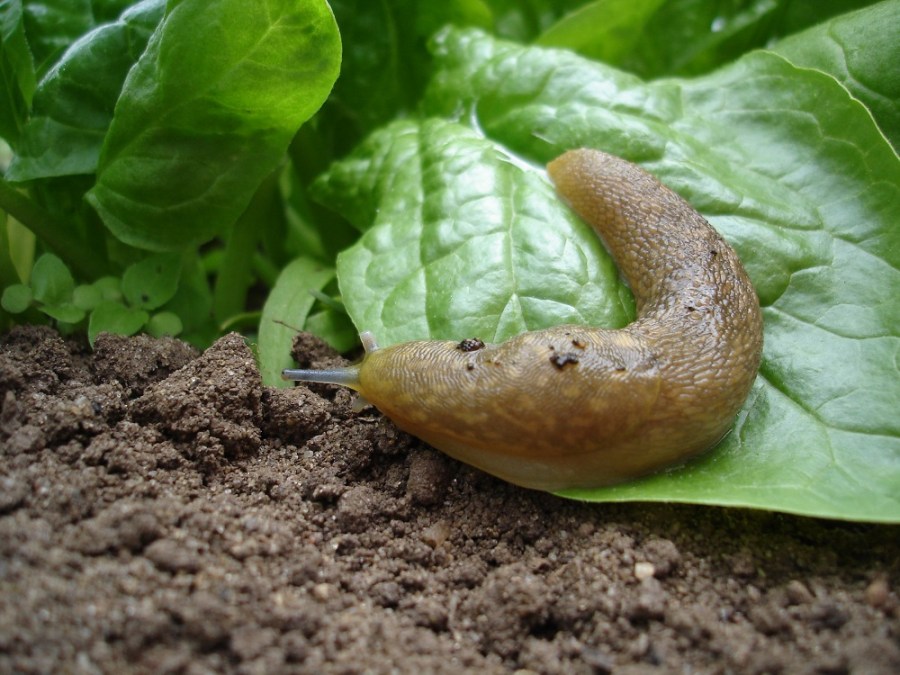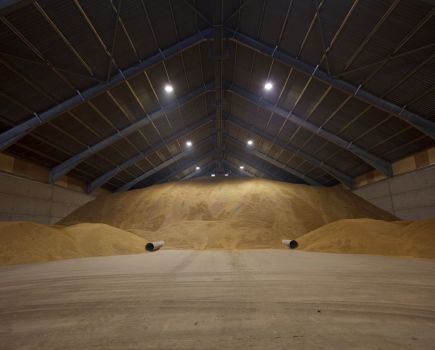With the UK’s most popular method of controlling slugs shortly to lose its approval, CPM seeks expert advice on tactics to outwit this slippery adversary.
They’re really far more interesting than insects.
By Tom Allen-Stevens
Slug control is set to get harder, according to Dr Gordon Port of Newcastle University. That’s especially the case for those who have relied on pellets based on the active ingredient metaldehyde, which loses its approval for sale at the end of this month.
“Slugs are difficult beasts to understand, and no one really knows the best way to control them – that’s what makes them so good at being pests. But getting to know them is the key to keeping them in check – pellets should really be the weapon of last resort,” he says.

Put down an upturned plant-pot holder or mat overnight with chicken layers mash to tell if you have slugs.
Gordon has spent decades studying the pest. “They’re really far more interesting than insects. There are a number of different types, but it’s the grey field slug (Deroceras reticulatum) that’s really the main problem in most arable crops.”
Slugs don’t make natural land creatures, he says. “With a wet skin and high water content, it’s this link with water that’s the key to understanding their survival. It puts them underground through most of the day, and it’s at night they’re most likely to feed. But they don’t need much moisture to be active – if the underside of a stone is damp, that’s enough. The surface temperature also needs to be above 5°C.”
This means they like a moist crop canopy, and oilseed rape is their favourite. There’s also cover crops, that may improve soil texture, but provide shelter for and encourage slugs, he warns. “What they don’t like are cultivations – these really mess up their lives. Achieving a good tilth will give slugs less soil cavities in which to hide, and rolling at night will dent a population.”
Their natural predators include birds, ground beetles and nematodes. Birds have little effect on overall numbers, and ground beetles are helpful, says Gordon, but tend not to come too far into a field from a margin or beetle bank. Nematodes don’t generally reach sufficient numbers to provide adequate control, and applying them as a biological control is unlikely to be cost effective in broad-acre crops. “Slugs are also good at defending themselves, producing plenty of mucus.”
So apart from cultivations and a good seedbed, timing is the best way to control slugs, advises Gordon. “First of all, make sure you know whether they are present and where they are. Studies have shown they are not evenly distributed.”
Trapping is the best way to tell, putting down an upturned plant-pot holder or mat overnight with some non-chemical bait, such as chicken layers mash, and then inspecting the following day. Four slugs per trap is the threshold for treatment before wheat and one before OSR.
“But don’t put pellets on in dry weather. The best timing to apply is not before slugs are active, but just before your crop is at risk,” he notes.
“The other aspect to consider is that what you see on the surface is literally the top of the iceberg – where you find evidence of slugs, more will lurk beneath the surface. That’s particularly important to bear in mind with ferric phosphate, as when they ingest the pellets, they will retreat from the surface to die.”
Gordon points out one final characteristic about slugs. “They appear to bump into food, rather than be attracted towards it, but will only ingest what they find if it’s appetising. So bait-point density is important – 30-40/m² is about right – as are bait size and palatability. If a slug finds a pellet, make sure it enjoys the meal and that the dose it receives is toxic.”
Chances are, the dose it receives won’t be metaldehyde this autumn, which will be a big turn-around for most growers, notes Certis arable product manager Neil Beadle. “Metaldehyde took 70% of the slug pellet market last year, according to Kynetec AgriInsight Panel, so this year will be the first for many growers with ferric phosphate. It also marks 10 years since Sluxx came to the market – the first pellet with the active and the leading non-metaldehyde brand that has evolved over time.”
Certis uses food-grade ingredients for its durum wheat-based ferric phosphate pellets, which also include a mould inhibitor, points out technical manager Lawrence Power. “If a slug comes across a mouldy pellet, it won’t eat it. Pellets should be durable, palatable and spread well.”
Ferric phosphate is just as toxic to slugs as metaldehyde, but slugs retreat beneath the surface to die, he points out. “So don’t look for dead slugs, but how your crop is performing and whether the pellets are disappearing. The active also performs better than metaldehyde at lower temperatures, so should help those sowing late because of blackgrass,” he adds.




